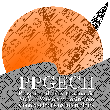Banca de DEFESA: Jurandir Zezokiware
Uma banca de DEFESA de MESTRADO foi cadastrada pelo programa.DISCENTE : Jurandir Zezokiware
DATA : 12/01/2024
HORA: 14:00
LOCAL: google meet
TÍTULO:
ORAL NARRATIVES IN THE CLASSROOM: THE HISTORY AND SINGING OF KOKOTERO
PALAVRAS-CHAVES:
Kokotero; Narrative; Halit Paresi
PÁGINAS: 40
GRANDE ÁREA: Outra
ÁREA: Multidisciplinar
RESUMO:
The Haliti-Paresi language belongs to the Aruak linguistic family, spoken by a people with the same name, in the state of Mato Grosso, which is 500 km from Cuiabá. Currently, the Paresí have a population of 3,000 people, 90% of whom are bilingual in indigenous language and Portuguese. In the village, they communicate with each other in their mother tongue, and with non-indigenous people and other ethnic groups through Portuguese. This research aims to present aspects related to the traditional history of the Haliti people called “Kokotero: the origin of cassava” which tells the origins not only of cassava, but of other plants. The story narrates that Kokotero's mother buried her daughter and cassava was born from her. Then, other women also decided to bury their daughters to see if cassava would be born: katyolalo buried his daughter and katyola (mangaba) was born, zohityalo buried his daughter and zohitya (cashew) was born, and zawacero buried his daughter and zawace/ ketewakolore was born ( without translation). These native fruits are found in the cerrado, in the countryside and in the woods and this story will be investigated in different contexts: sung, narrated and in bezenções. Through this narrative research, the semantic aspects of homonymous, polysemous, synonyms and words that are mentioned in everyday life will be analyzed, as well as the technical words that will be investigated. In addition, the different cassava species that emerged from a single tree will be explored, how many still exist, how many have already become extinct and how many species of cassava in total. From the data collection, the names of the species will be recorded in the mother tongue Haliti, with a Portuguese version. All the research will be developed together with students from the 5th to 9th grade of the Municipal Indigenous School Formoso located in the Municipality of Tangara da Serra MT, in the Rio Formoso Indigenous Land, Rio Formoso village. In addition to recording the linguistic aspects of the texts, recording the narrative in the mother tongue, in its entirety, is extremely important for strengthening the original language. The narratives of the stories, such as Kokotero, the origin of cassava, present a lot of relevant information about the language and culture of the people. This study will enable the maintenance and strengthening of the Haliti language, contributing to the preservation of the linguistic and cultural richness that indigenous languages constitute.
MEMBROS DA BANCA:
Presidente - 131915001 - ALEXANDRE MARIOTTO BOTTON
Interno - 131919001 - RAIMUNDO NONATO CUNHA DE FRANCA
Externo à Instituição - JOÃO CARLOS GOMES - UNIR



